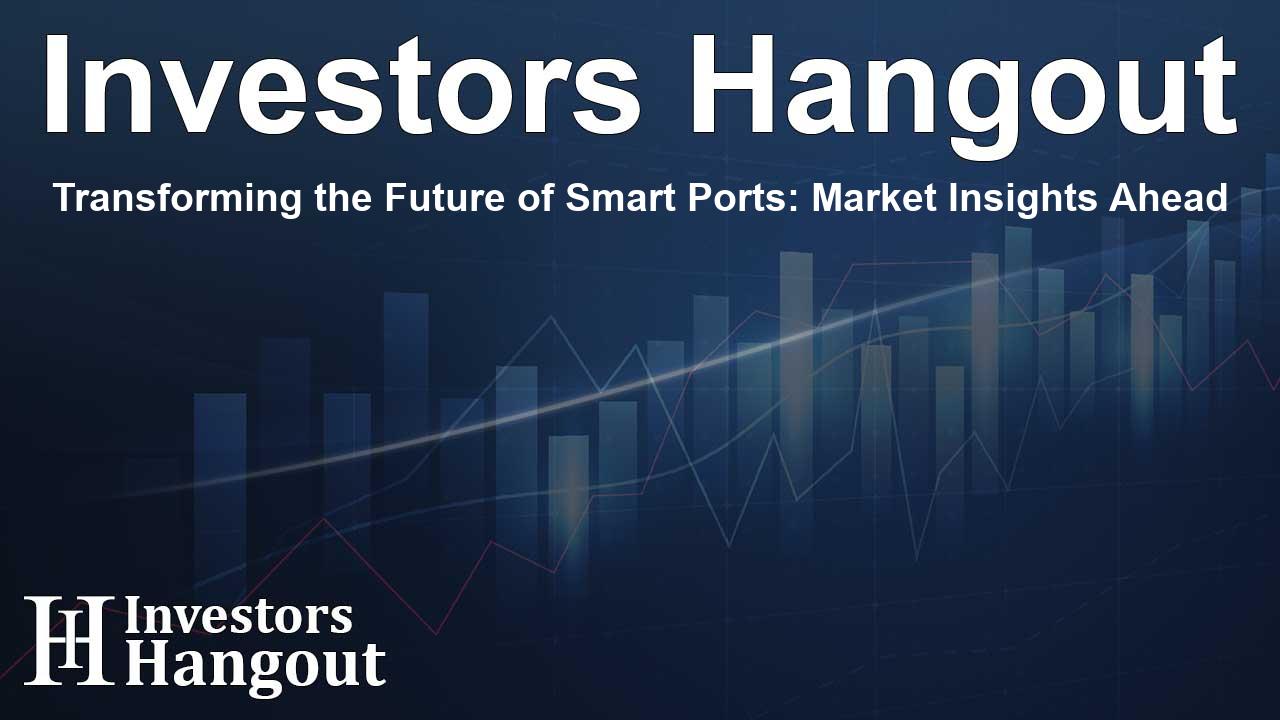Transforming the Future of Smart Ports: Market Insights Ahead

Transforming the Smart Port Landscape
The Smart Port Market is on a remarkable trajectory, projected to grow from an estimated USD 2.53 billion in 2025 to an anticipated USD 7.95 billion by 2030. This represents a stunning compound annual growth rate (CAGR) of 25.8% during this period. Increasing focus on enhancing port efficiency, environmental sustainability, and safety, alongside rising international trade volumes, drive this growth. As nations seek to reduce carbon emissions and alleviate port congestion, smart technology solutions are more vital than ever.
The Technology Driving Change
Modern ports face numerous challenges, including increased cargo demands and the need for real-time data transparency. Integration of technologies such as AI-powered cranes, IoT-enabled sensors, digital twin models, and blockchain systems has become paramount. These innovations enable optimal traffic management, efficient container control, and reduced turnaround times, ultimately lowering operating costs and enhancing safety.
Seaports Leading Growth
Seaports are projected to be the fastest-growing segment within the Smart Port Market. The sheer scale of operations at these ports necessitates advanced automation and real-time tracking capabilities. Major seaports worldwide, such as Tuas Mega Port, Shanghai Yangshan, and Busan, have made significant investments in smart technologies to improve their operational efficiencies. These upgrades not only increase throughput but also align with global decarbonization objectives, as stakeholders recognize the importance of sustainable practices.
Regional Insights: Asia Pacific Dominance
Asia Pacific is expected to hold the largest market share in the Smart Port sector during the forecast period. The region boasts robust trade growth, extensive port infrastructure, and proactive governmental digitalization initiatives, which together create a fertile ground for smart port technologies. Pioneering ports like Singapore, Shanghai, and Busan are already embracing AI, IoT, and digital twin systems to enhance their operations. Collaboration with international initiatives such as China's Belt and Road Initiative further intensifies the push for modernization across this vibrant region.
Key Players Shaping the Market
Several prominent companies are driving innovation in the Smart Port Market. ABB, Siemens, and GE Vernova are among the major players investing substantially in developing advanced maritime solutions. Each of these industry giants employs a strategic mix of acquisitions, product launches, and partnerships to expand their influence in this rapidly evolving sector.
The Role of IBM in Digital Transformation
IBM is at the forefront of digital transformation in ports, leveraging its expertise in AI and hybrid cloud solutions to enhance port operations. Their platforms allow for real-time monitoring, predictive maintenance, and improved supply chain clarity. IBM collaborates with significant maritime hubs, focusing on integrating advanced data platforms and cloud infrastructures to facilitate full-scale digital transformations.
Accenture's Commitment to Smart Port Ecosystems
Accenture is another key player promoting smart port development. This international consulting firm plays a critical role in technological integration and operational improvement for ports across Europe, the Middle East, and Asia. By providing innovative infrastructure models and digital transformation strategies, Accenture supports ports in achieving enhanced productivity and real-time operational intelligence.
Embracing the Future
As the Smart Port Market continues its upward trajectory, it becomes clear that collaboration among industry players, technological advancements, and sustainability initiatives will shape the future of maritime logistics. The ongoing evolution of smart technology in port operations not only addresses present challenges but also paves the way for sustainable growth in global trade and supply chain management.
Frequently Asked Questions
What is the projected growth of the Smart Port Market?
The Smart Port Market is expected to grow from USD 2.53 billion in 2025 to USD 7.95 billion by 2030, reflecting a CAGR of 25.8%.
What technologies are driving the Smart Port Market?
Key technologies include AI-powered cranes, IoT sensors, digital twins, and blockchain systems that enhance efficiency and transparency in port operations.
Which regions are leading in the Smart Port Market?
The Asia Pacific region is anticipated to dominate the Smart Port Market due to its extensive infrastructure and government initiatives for digitalization.
Who are the key players in the Smart Port industry?
Prominent companies include ABB, Siemens, GE Vernova, and IBM, all of whom play significant roles in technology development and implementation.
How do smart ports contribute to sustainability?
Smart ports enhance sustainability by reducing carbon emissions, optimizing energy efficiency, and streamlining operations to minimize environmental impact.
About The Author
Contact Olivia Taylor privately here. Or send an email with ATTN: Olivia Taylor as the subject to contact@investorshangout.com.
About Investors Hangout
Investors Hangout is a leading online stock forum for financial discussion and learning, offering a wide range of free tools and resources. It draws in traders of all levels, who exchange market knowledge, investigate trading tactics, and keep an eye on industry developments in real time. Featuring financial articles, stock message boards, quotes, charts, company profiles, and live news updates. Through cooperative learning and a wealth of informational resources, it helps users from novices creating their first portfolios to experts honing their techniques. Join Investors Hangout today: https://investorshangout.com/
The content of this article is based on factual, publicly available information and does not represent legal, financial, or investment advice. Investors Hangout does not offer financial advice, and the author is not a licensed financial advisor. Consult a qualified advisor before making any financial or investment decisions based on this article. This article should not be considered advice to purchase, sell, or hold any securities or other investments. If any of the material provided here is inaccurate, please contact us for corrections.
